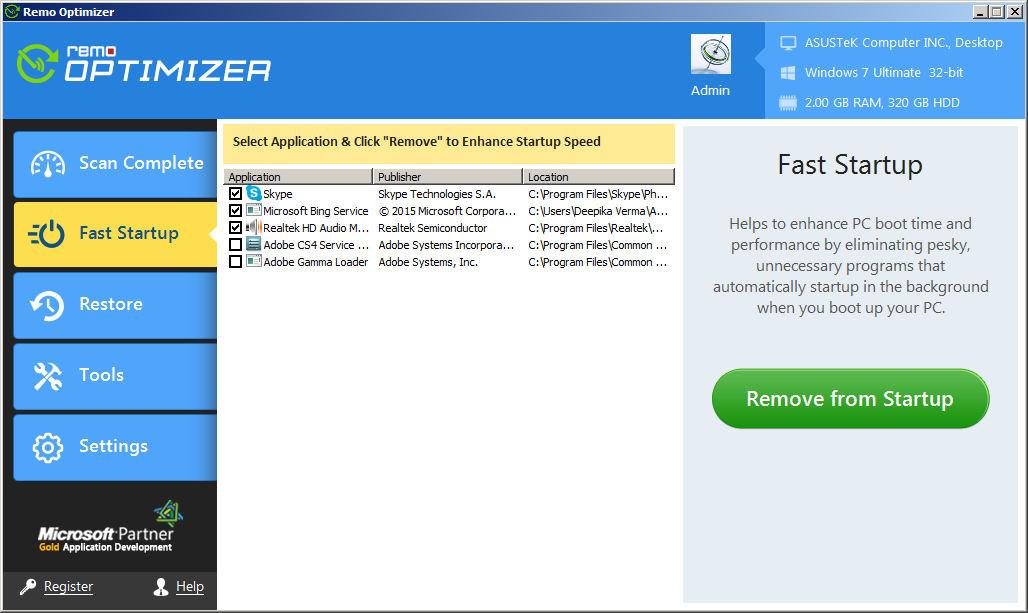Unnessary Startup Programs
Squeezing out that extra bit of performanceNow that Windows 10 has gone public and is making its way to consumers, we thought it would be a good time to provide some tips that will help speed up your Windows 10 experience. Some of these are new and some are already well known. So, whether you're new to Windows 10 or an old hat already, you can keep these tweaks (listed here with instructions on how to access them in Windows 10) handy.
More tips will be added as they're discovered.Disable Transparency Effects.Transparency effects can often add unnecessary effects to things just for the sake of special effects. If you want that classic solid look, turn off the transparency effects, and get a decent increase in responsiveness.1. Right-click the desktop and choose Personalize2. Choose Colors3. Turn off “Make Start, taskbar, and action center transparent”Disable Programs at StartupStartup is a great place to poke around to see what kind of programs have wedged themselves in there, slowing boot-to-desktop times and loading up unnecessary CPU cycles. You'll often find things you don't actually want automatically turned on. Programs should launch when we ask them to, not because they think they're privileged!1.
Right-click the Start button2. Click Task Manager3. Click Startup4.
Highlight a program and click DisableDisable Unnecessary ServicesServices are very much like programs in Startup, except they can be much more crucial to the overall operation of Windows. There are lots of Microsoft-specific features that are enabled, but there are some that most people don't need.
Have a look through the Services tab and read the description of each one. You can stop a service to see if it impacts anything, and reenable it if necessary. You can also permanently disable a service from starting at all.1.
Right-click the Start button2. Click Task Manager3. Click Services4. Right-click a specific service and choose “Stop”Shut off Shadows, AnimationsAgain, special effects can be largely useless. Animations can slow down your system. Shadows can be a nice touch, but all these things add up to CPU cycles, which by today's standards aren't really a big deal.
Unnecessary Startup Programs

But still, when you want everything to be swift, disable the fluff.1. Right-click the Start button2.
List Of Unnecessary Startup Programs
Choose System3. Click “Advanced system settings” on the left4. Click the Advanced tab5. Click the Settings button under Performance6. Click “Adjust for best performance” or manually disable each effect7. Note: there’s also a switch in Settings / Ease of Access / Other Options that turn off animationsEnable Fast Startup1.
Right-click the Start button2. Choose Control Panel3. Click System and Security4. Install reason demo beta. Click Power Options5.
On the left, click “choose what the power buttons do”6. At the bottom, click “Turn on fast startup” under Shutdown settings7. Click “Save changes”Uninstall Unused ProgramsThis one is self explanatory! Remove stuff you don't use!1. Right-click the Start button2.
Remove Unnecessary Startup Programs
Click Programs and Features3. Select the unwanted software and click “Uninstall/Change”Defragment Your C: DriveDefragmenting C: drive is more applicable if you're still booting off a spinning disk hard drive and not a SSD. SSDs don't need defragmentation, and unless you're using a more advanced file system format like EXT4, you're going to need to do some defragmentation.1. Click the Start button, then click the File Explorer link2. Right-click Local Disk C: and choose Properties3. Click the Tools tab4.

Click “Optimize and Defragment Drive”Perform Disk CleanupThe built-in Disk Cleanup tool in Windows actually does a decent job of removing unnecessary files. If you want to go further though, like finding duplicates, you'll need a third-party tool.1. Click the Start button, thenclick the File Explorer link2.
Right-click Local Disk C: and choose Properties3. Under the General tab, click the Disk Cleanup button4. Click 'unnecessary files (temporary internet files, etc.),' then click OK5.
Note there’s a “Clean up system files” button for advanced users.